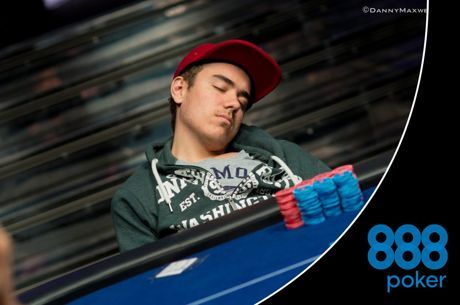Poker Strategy: In the Mix -- Tournament Structures in Mixed Hold'em

Over the last few years, tournament directors have experimented with ways to branch out from simply running all no-limit hold'em tournaments all the time. Mixed-game tournaments are one of the few areas where there are increased opportunites for creativity than. The ascendancy of the $50,000 H.O.R.S.E. tournament at the World Series of Poker helped put mixed games back on the map a few years ago; the addition of "Eight-Game Mix" (what some call "Super Mix") reinforced the trend as tournament directors sought to add more mixed games tournaments to their schedules.
One type of mixed game that seems to have enjoyed more popularity than others is mixed hold'em. In the standard mixed hold'em tournament, the game alternates every level between fixed-limit and no-limit hold'em. I've been at the 2009 Aussie Millions Poker Championships for the last few weeks and had the privilege to cover the tail end of Event #13 – AUD$1,100 Mixed Hold'em. What struck me most about the play that I witnessed was the inability of the players to realize how much bigger the limit hold'em rounds were playing, compared to the no-limit hold'em rounds, and to adjust their playing strategies accordingly.
The final hand of the tournament provides an excellent example. With 436,000 chips in play, the game went from no-limit hold'em with blinds of 3,000 and 6,000 to limit hold'em with blinds of 8,000 and 16,000. For the no-limit hold'em round, the average stack was approximately 35 big blinds; for the limit hold'em round, it was approximately seven big bets. One hand to the river in limit hold'em is usually anywhere from two-and-a-half to five big bets; the average stack, therefore, could play two hands to the river and go broke.
Shortly after the changeover in game, Marlon Goonawardana was the 16,000-chip big blind. He started the hand with approximately 175,000 chips. Adam Peck was the button and came in for a raise to 32,000. Goonawardana three-bet; Peck four-bet. Because the players were heads up, there was no cap. After the dealer confirmed that fact, Goonawardana five-bet. Peck six-bet him right back.
"Wait, how much am I in for?" Goonawardana asked. He seemed suddenly to wake up to the fact that there were many more chips in the pot than he had first realized. The dealer informed him that he was in for 80,000 and that Peck raised to 96,000. Goonawardana counted down his stack, realizing that almost half of it was already in the middle. He told Peck that he would agree to just keep raising until he was all in, since he felt he was already committed to the hand and the pot. Goonawardana tabled A♥9♣ against Peck's A♣K♥ and was eliminated in second place on a board of 7♦K♦7♠6♥8♣.
Undoubtedly fatigue played into Goonawardana's decision-making process; the tournament had been running for fourteen hours at that point. But he also didn't seem to understand how much bigger the limit hold'em rounds were playing than their no-limit counterparts. In mixed-game tournaments, with the game switching from level to level or orbit to orbit, it is especially important to familiarize yourself with the structure beforehand in order to understand its impact on play. The same was true of Event #41 - $1,500 Mixed Hold'em at the 2008 World Series of Poker. The limit hold'em rounds played significantly bigger than their no-limit counterparts. An effective tournament strategy has to take that into consideration, especially as players' relative stack sizes decrease in relation to the blinds and limits.
I've discussed before the mistakes that no-limit players often make when switching over to fixed-limit hold'em, including not understanding the heavy math component of limit hold'em, calling too much because it's "just one bet," and badly misplaying the river. Most no-limit hold'em players also don't understand how their stack size relates to the limits when the structure changes to fixed-limit betting. They are thinking about hands in terms of big blinds, but limit hold'em is all about big bets — how much it's going to cost to get to the river and to a showdown. When there's no ability to shove all in preflop or on the flop, thinking of hands in terms of big blinds is largely irrelevant.
As I covered the mixed hold'em tournament at the Aussie Millions, I noticed that most players were busting in the limit hold'em rounds. They knew how to keep pots small in no-limit hold'em, but couldn't figure out how to do that in limit hold'em. Truth be told, the limit hold'em rounds were playing so much bigger that I don't think there was any way of keeping pots small, except maybe for checking the big streets all the way down. Some players were criticizing the structure as poor; certainly such an argument could be made. But the structure certainly wasn't going to change. The players that seemed to have the most success were the ones who adapted to it and tried to avoid playing as many limit hold'em hands as they did no-limit hold'em hands.
I do think, with the same problem cropping up at the WSOP and the Aussie Millions, that someone should sit down with tournament directors and figure out a better structure for mixed hold'em events. But that's a horse of a different color.








